What is Generative AI?
Generative AI is an advanced branch of artificial intelligence that enables machines to create new and original content such as text, images, music, or even code.
Generative AI is a branch of artificial intelligence that uses deep-learning (neural network) models trained on massive datasets to create new content. These models learn patterns in text, images, audio or other data so they can produce original outputs (like articles, images, or music) in response to user prompts.
In other words, generative AI generates media "from scratch" rather than simply analyzing or classifying existing data. The diagram here illustrates how generative models (center circle) sit within neural networks, which are part of machine learning and the broader AI field.
Generative AI as deep-learning models that "generate high-quality text, images, and other content based on the data they were trained on", and it relies on sophisticated neural algorithms that identify patterns in huge datasets to produce novel outputs.
— IBM Research
How Generative AI Works
Building a generative AI system typically involves three main phases:
Training (Foundation Model)
A large neural network (often called a foundation model) is trained on vast amounts of raw, unlabeled data (e.g. terabytes of internet text, images or code). During training, the model learns by predicting missing pieces (for instance, filling in the next word in millions of sentences). Over many iterations it adjusts itself to capture complex patterns and relationships in the data. The result is a neural network with encoded representations that can generate content autonomously in response to inputs.
Fine-tuning
After initial training, the model is customized for specific tasks by fine-tuning. This may involve additional training on labeled examples or Reinforcement Learning from Human Feedback (RLHF), where humans rate the model's outputs and the model adjusts to improve quality. For example, a chatbot model can be fine-tuned using a set of customer questions and ideal answers to make its responses more accurate and relevant.
Generation
Once trained and tuned, the model generates new content from a prompt. It does so by sampling from the patterns it has learned – e.g. predicting one word at a time for text, or refining pixel patterns for images. In practice, "the model generates new content by identifying patterns in existing data". Given a user's prompt, the AI predicts a sequence of tokens or images step-by-step to create the output.
Retrieval and Refinement (RAG)
Many systems also use Retrieval-Augmented Generation to improve accuracy. Here the model pulls in external information (like documents or a database) at generation time to ground its answers in up-to-date facts, supplementing what it learned during training.
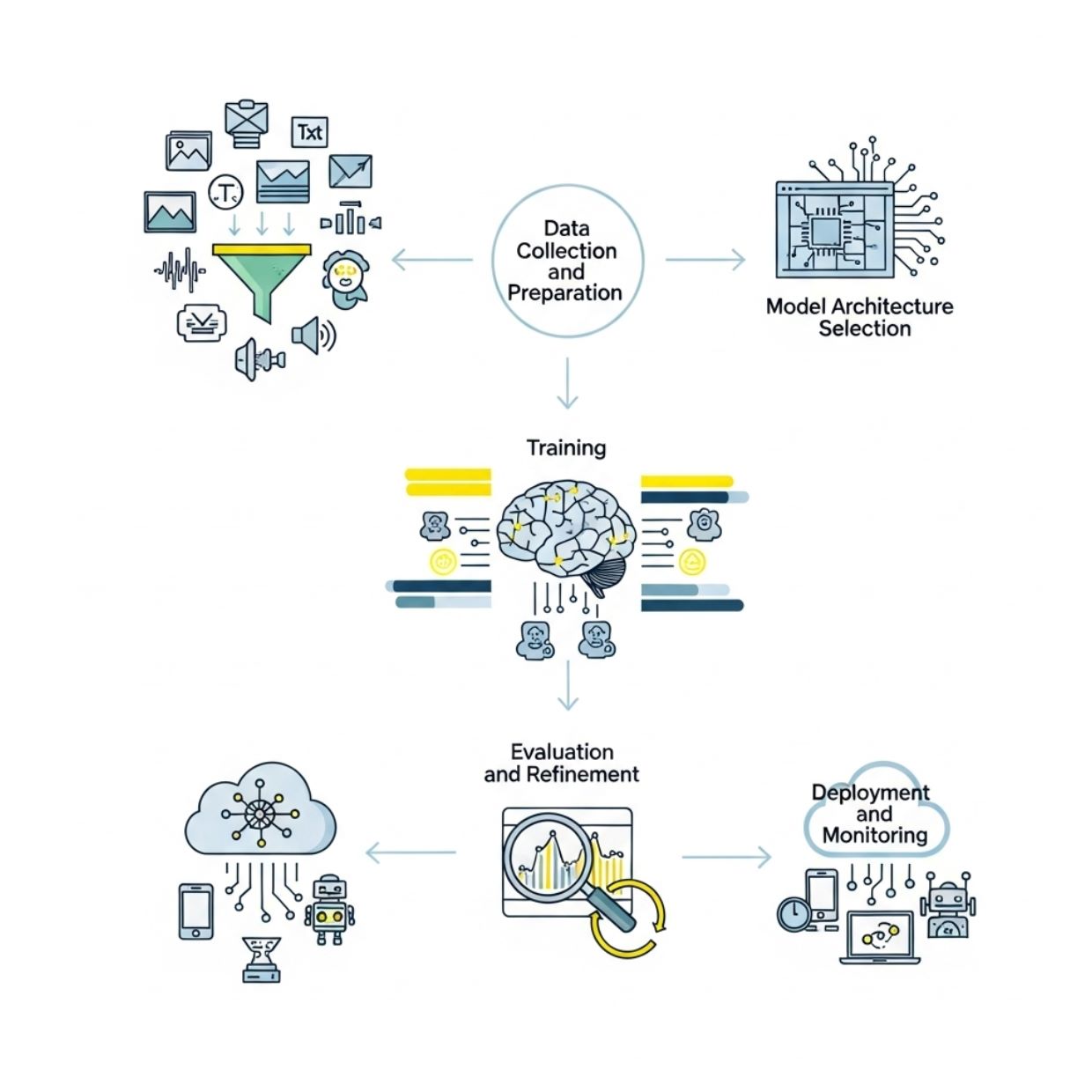
Key Model Types and Architectures
Generative AI uses several modern neural architectures, each suited to different media:
Large Language Models (LLMs) / Transformers
Diffusion Models
Generative Adversarial Networks (GANs)
Variational Autoencoders (VAEs)
Together, these architectures power the range of generative tools in use today.
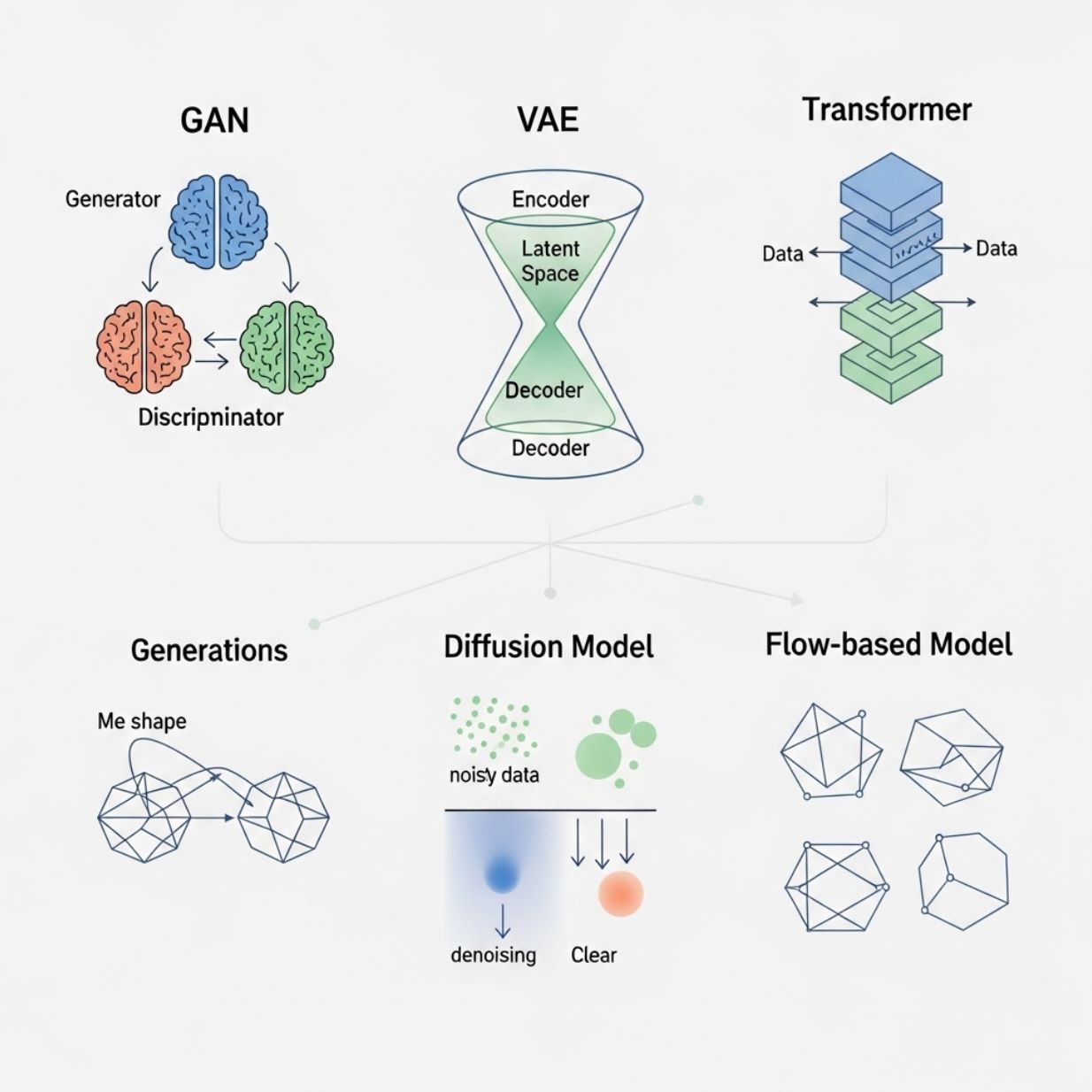
Applications of Generative AI
Generative AI is being applied across many fields. Key use cases include:
Marketing & Customer Experience
- Auto-writing marketing copy (blogs, ads, emails) and producing personalized content on the fly
- Powers advanced chatbots that can converse with customers or even take actions (e.g. assist with orders)
- Marketing teams can generate multiple ad variants instantly and tailor them by demographic or context
Business Automation
- Drafting and reviewing documents
- Quickly write or revise contracts, reports, invoices, and other paperwork
- Reducing manual effort in HR, legal, finance and more
- Helps employees focus on complex problem-solving rather than routine drafting
Software Development
- Automating code generation and completion
- Tools like GitHub Copilot use LLMs to suggest code snippets, fix bugs, or translate between programming languages
- Dramatically speeds up repetitive coding tasks
- Aids application modernization (e.g. converting old codebases to new platforms)
Research & Healthcare
- Suggesting novel solutions to complex problems
- In science and engineering, models can propose new drug molecules or design materials
- AI can generate synthetic molecular structures or medical images for training diagnostic systems
- Create synthetic data (e.g. medical scans) when real data is scarce
Creative Arts & Design
- Assisting or creating artwork, graphics, and media
- Designers use generative AI to produce original art, logos, game assets or special effects
- Models like DALL·E, Midjourney or Stable Diffusion can create illustrations or modify photos on demand
- Generating multiple variations of an image to inspire artists
Media & Entertainment
- Generating audio and video content
- AI can compose music, generate natural-sounding speech, or even draft short videos
- Produce voiceover narration in a chosen style or create music tracks based on a text description
- Create animation clips from text prompts, with quality improving rapidly
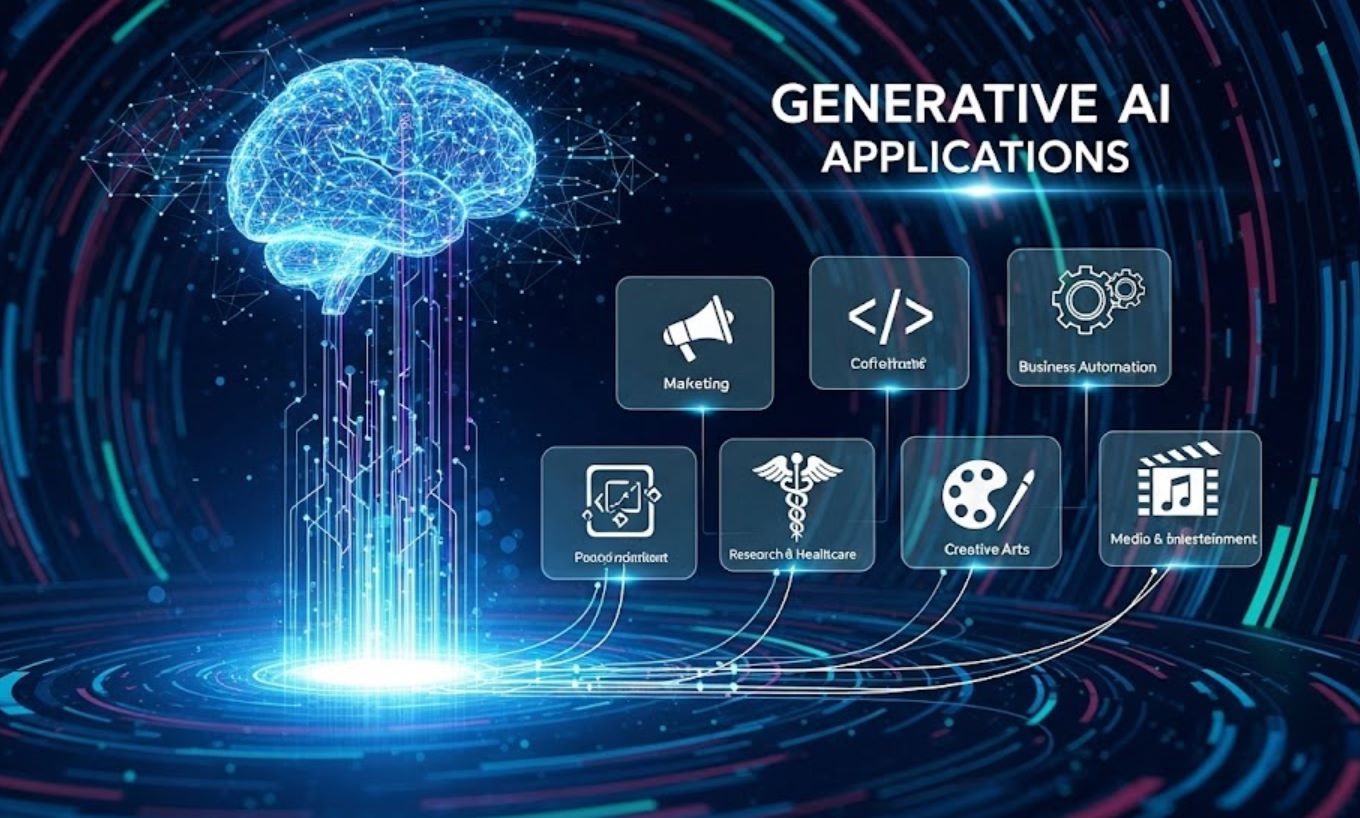
Benefits of Generative AI
Generative AI brings several advantages:
Efficiency and Automation
It automates time-consuming tasks. For instance, it can draft emails, code or design ideas in seconds, greatly accelerating work and freeing people to focus on higher-level tasks.
- Dramatic productivity gains
- Faster content generation
- Focus on strategic tasks
Enhanced Creativity
It can boost creativity by brainstorming and exploring variations. A writer or artist can generate multiple drafts or design options at the click of a button.
- Overcome creative blocks
- Multiple design variations
- Creative partner capability
Better Decision Support
By quickly analyzing large datasets, generative AI can surface insights or hypotheses that help human decision-making.
- Complex report summaries
- Statistical pattern recognition
- Data-driven insights
Personalization
Models can tailor outputs to individual preferences. For example, they can generate personalized marketing content, recommend products, or adapt interfaces.
- Real-time customization
- Improved user engagement
- Context-aware responses
In sum, generative AI can save time, spark innovation, and handle large-scale creative or analytical tasks with speed and scale.
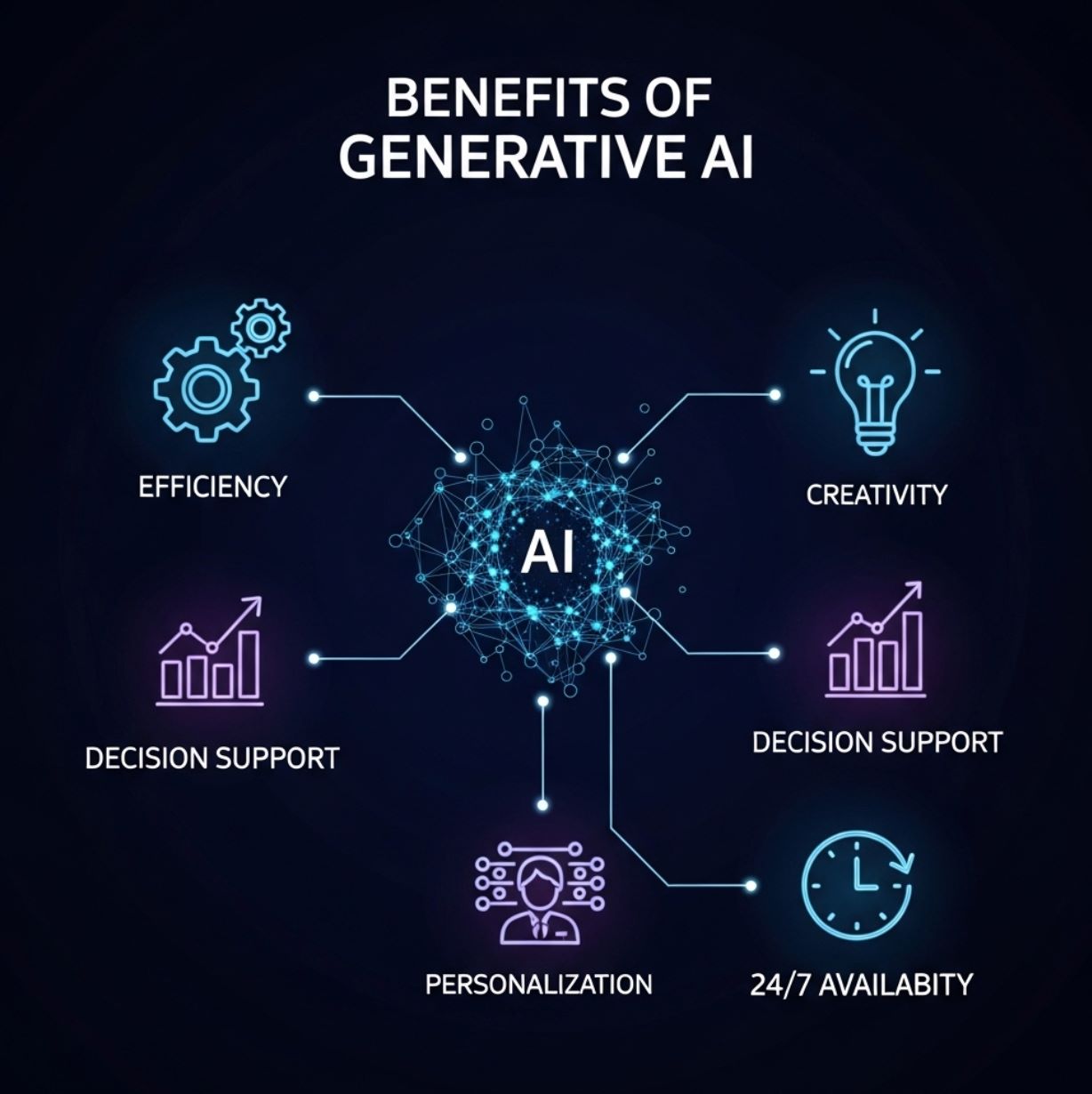
Challenges and Risks of Generative AI
Despite its power, generative AI has significant limitations and dangers:
Inaccurate or Fabricated Outputs ("Hallucinations")
Models can produce plausible-sounding but false or nonsensical answers. For example, a legal research AI might confidently cite fake case quotes. These "hallucinations" arise because the model doesn't truly understand facts – it only predicts likely continuations.
Bias and Fairness
Since AI learns from historical data, it can inherit societal biases in that data. This may lead to unfair or offensive results (e.g. biased job recommendations or stereotyped image captions).
Privacy and IP Concerns
If users feed sensitive or copyrighted material into a model, it might inadvertently reveal private details in its outputs or infringe on intellectual property. Models can also be probed to leak parts of their training data.
Deepfakes and Misinformation
Generative AI can create highly realistic fake images, audio or video (deepfakes). These can be used maliciously to impersonate individuals, spread false information, or scam victims.
Lack of Explainability
Generative models are often "black boxes". It's typically impossible to understand why they produced a given output or to audit their decision process. This opacity makes it hard to guarantee reliability or trace errors.
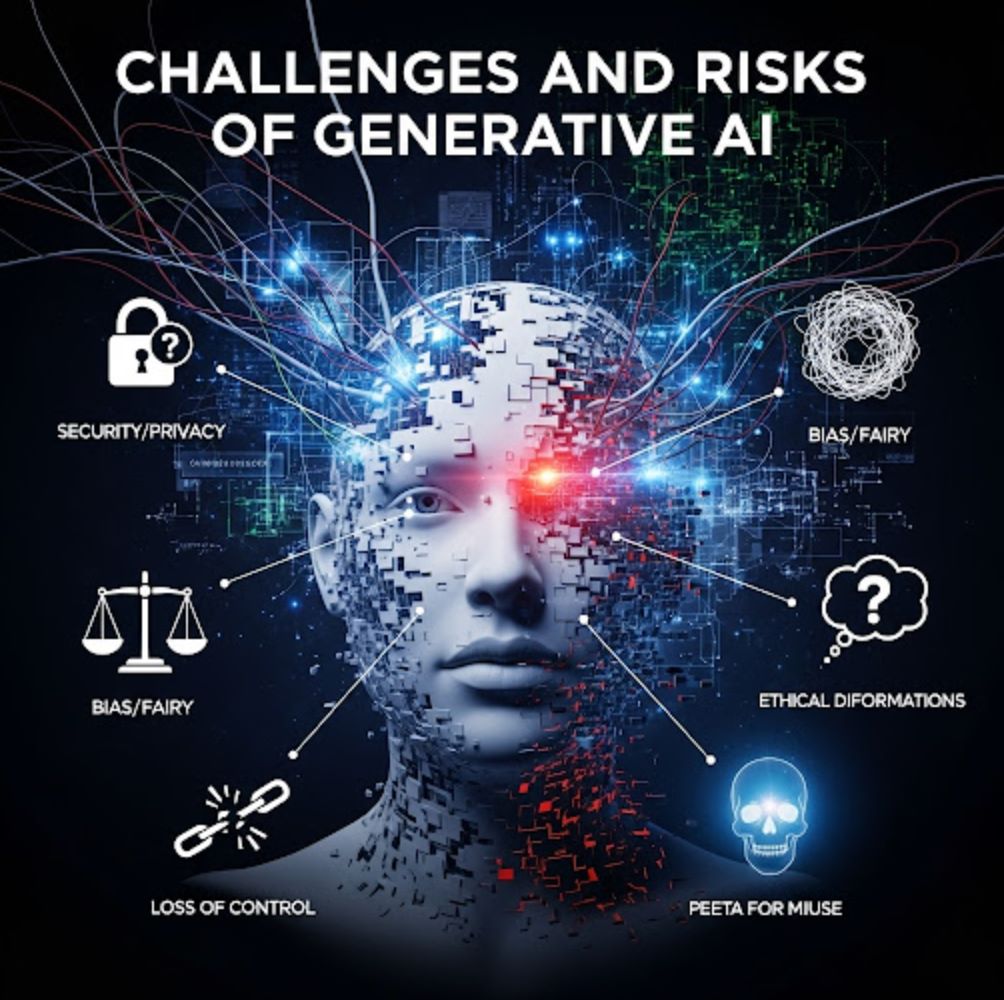
The Future of Generative AI
Generative AI is advancing at a breakneck pace. Adoption is growing rapidly: surveys find about one-third of organizations already use generative AI in some way, and analysts predict that roughly 80% of companies will have deployed it by 2026. Experts expect this technology to add trillions of dollars to the global economy and transform industries.
After ChatGPT's debut, generative AI "became a global phenomenon" and is "expected to add trillions to the economy" by enabling massive productivity gains.
— Oracle Research
What's Coming Next
- More specialized and powerful models (for science, law, engineering, etc.)
- Better techniques to keep outputs accurate (e.g. advanced RAG and better training data)
- Integration of generative AI into everyday tools and services
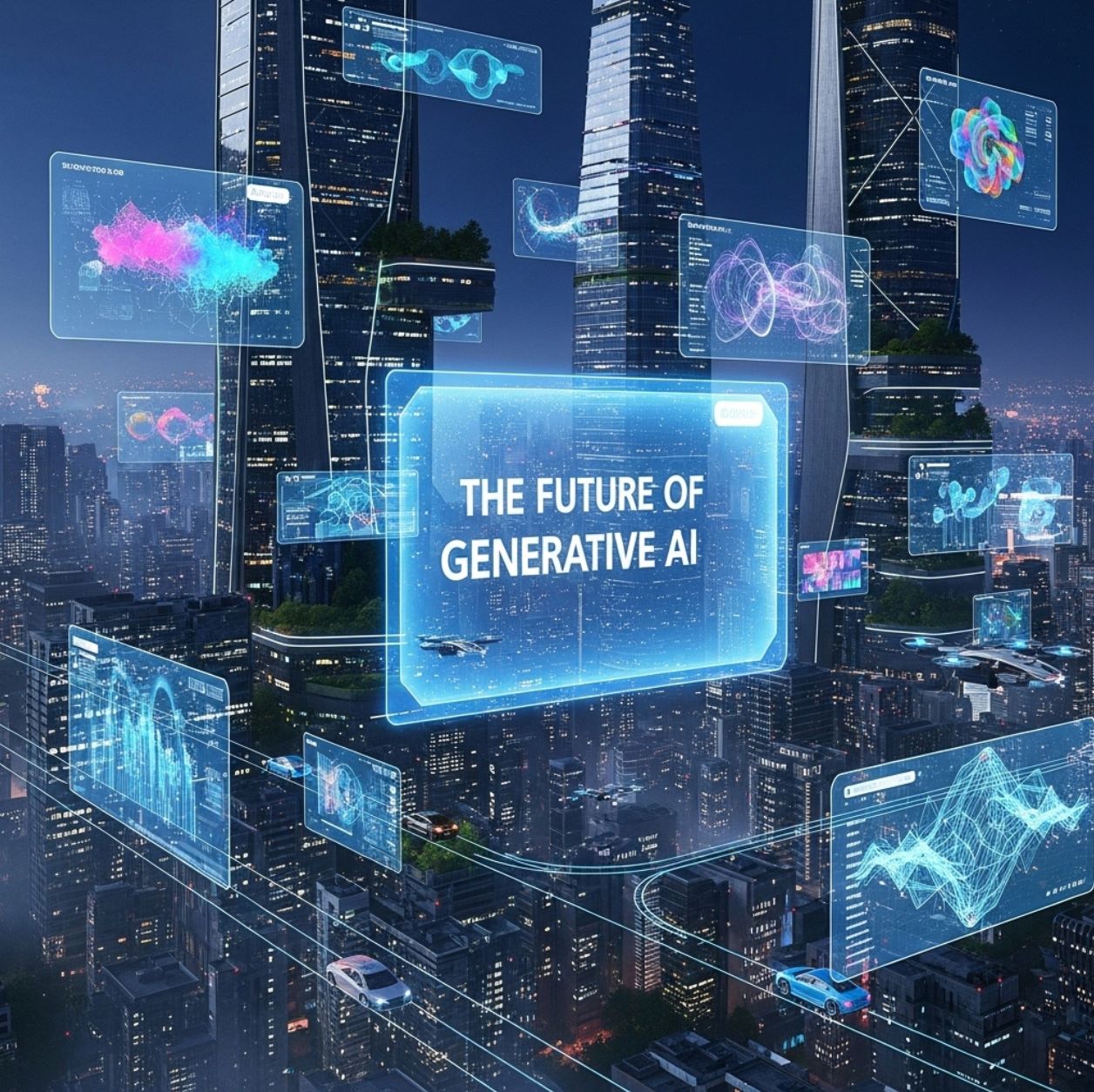
Key Takeaways
In summary, generative AI refers to AI systems that create new, original content by learning from data. Powered by deep neural networks and large foundation models, it can write text, generate images, compose audio and more, enabling transformative applications.
Huge Benefits
- Enhanced creativity and efficiency
- 24/7 availability
- Massive productivity gains
Critical Risks
- Errors and bias issues
- Deepfakes and misinformation
- Privacy and IP concerns
While it offers huge benefits in creativity and efficiency, it also brings challenges like errors and bias that users must address. As the technology matures, it will increasingly become an integral tool across industries, but responsible use will be essential to harness its potential safely.



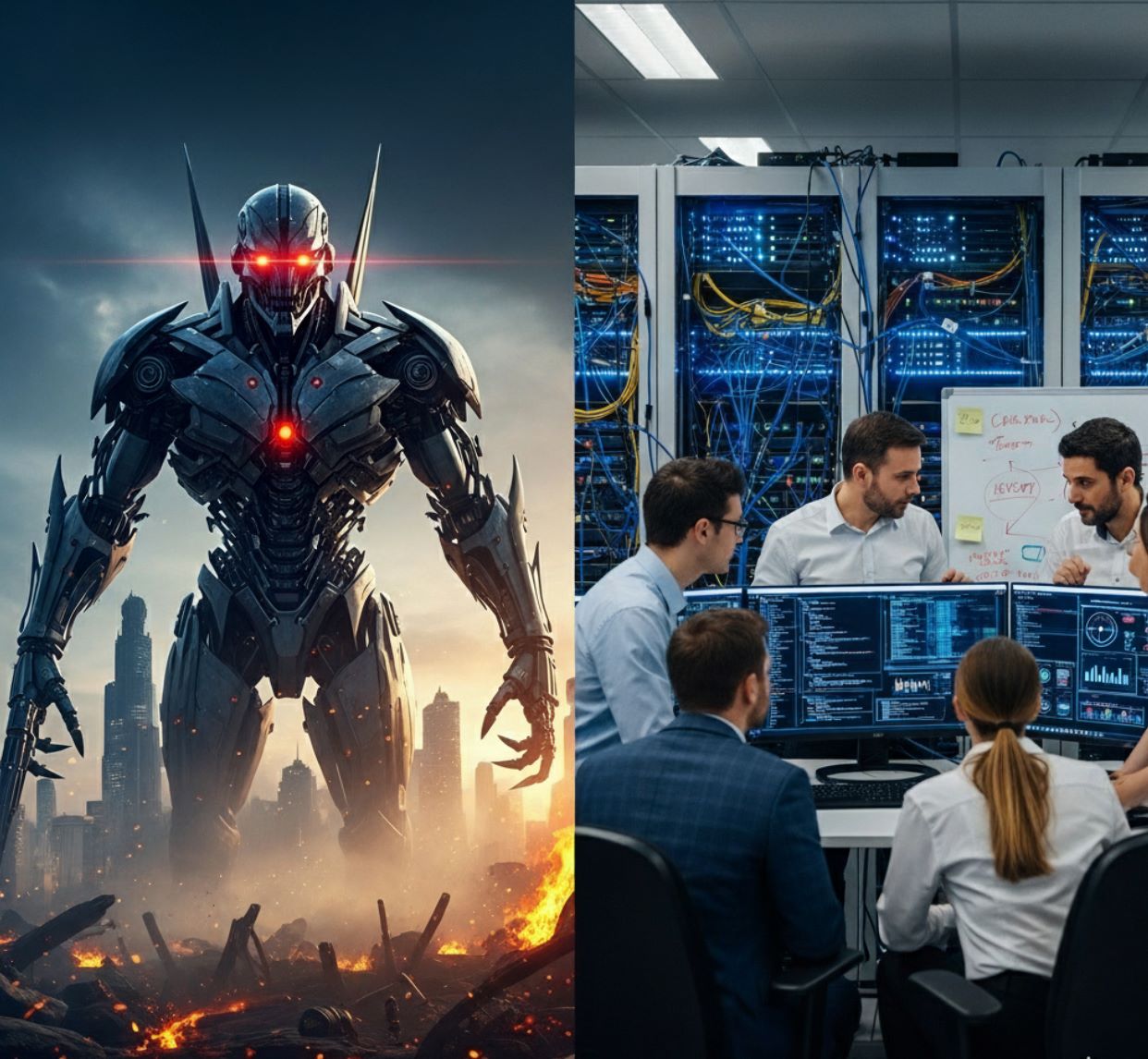
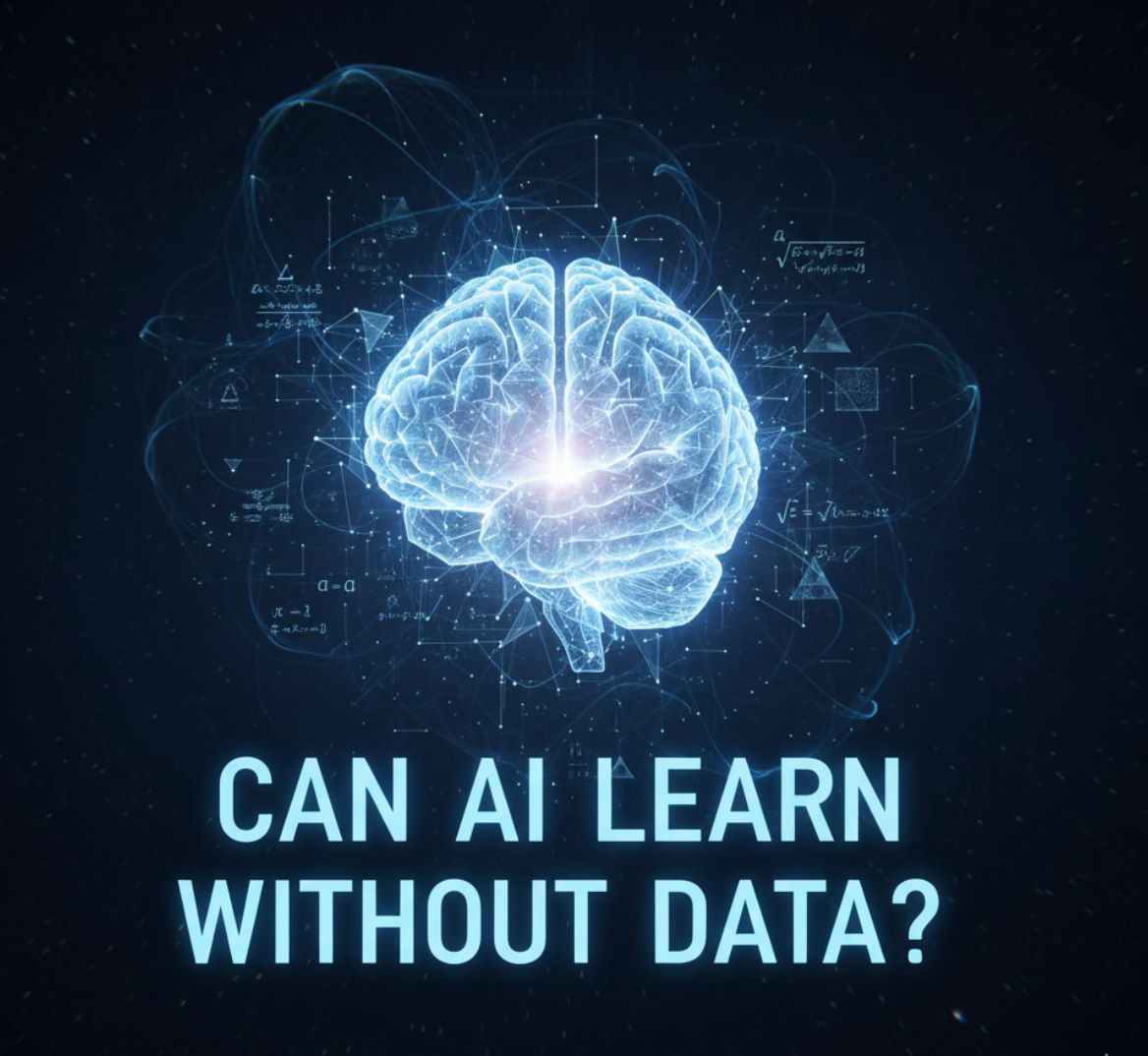
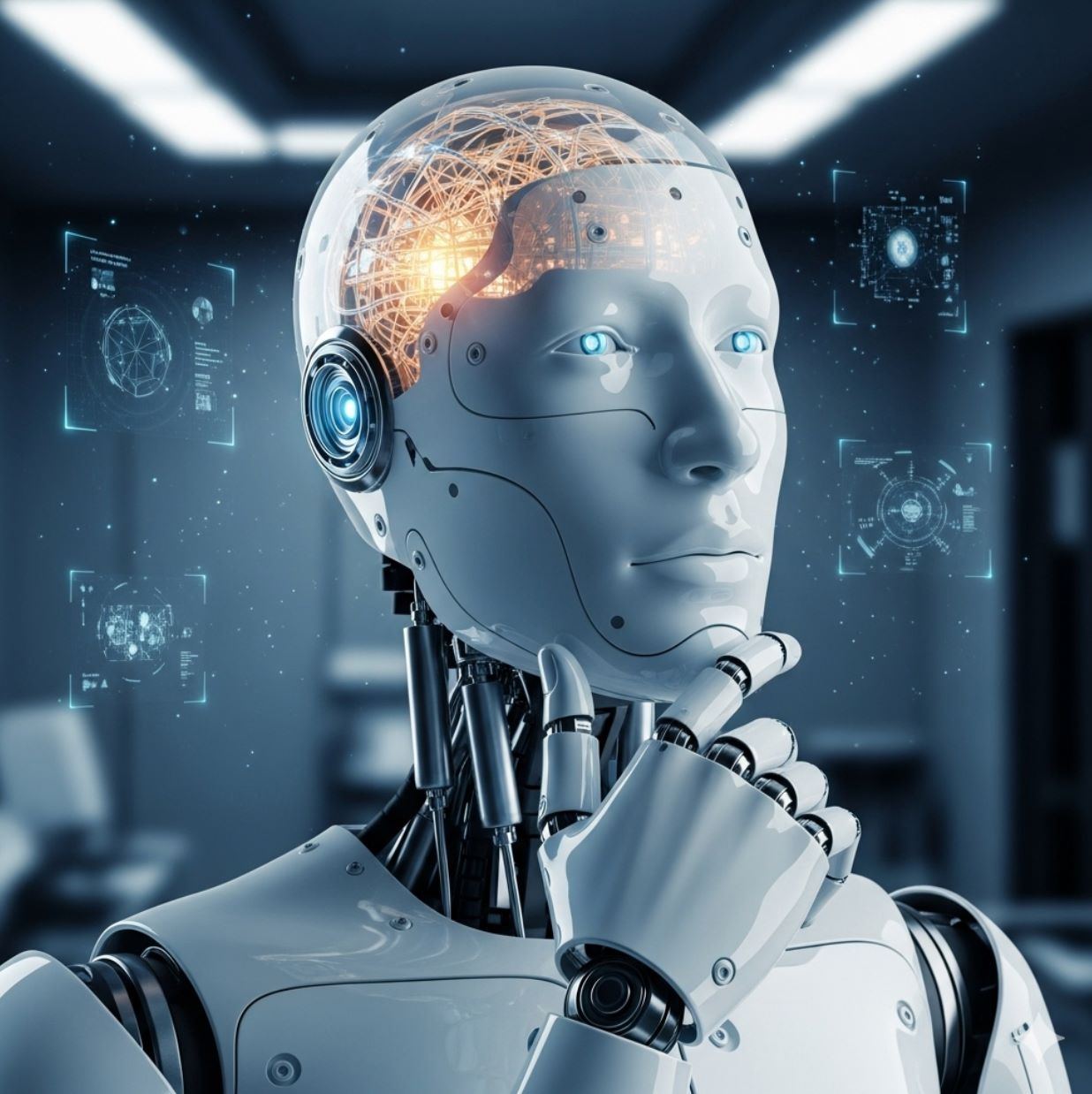
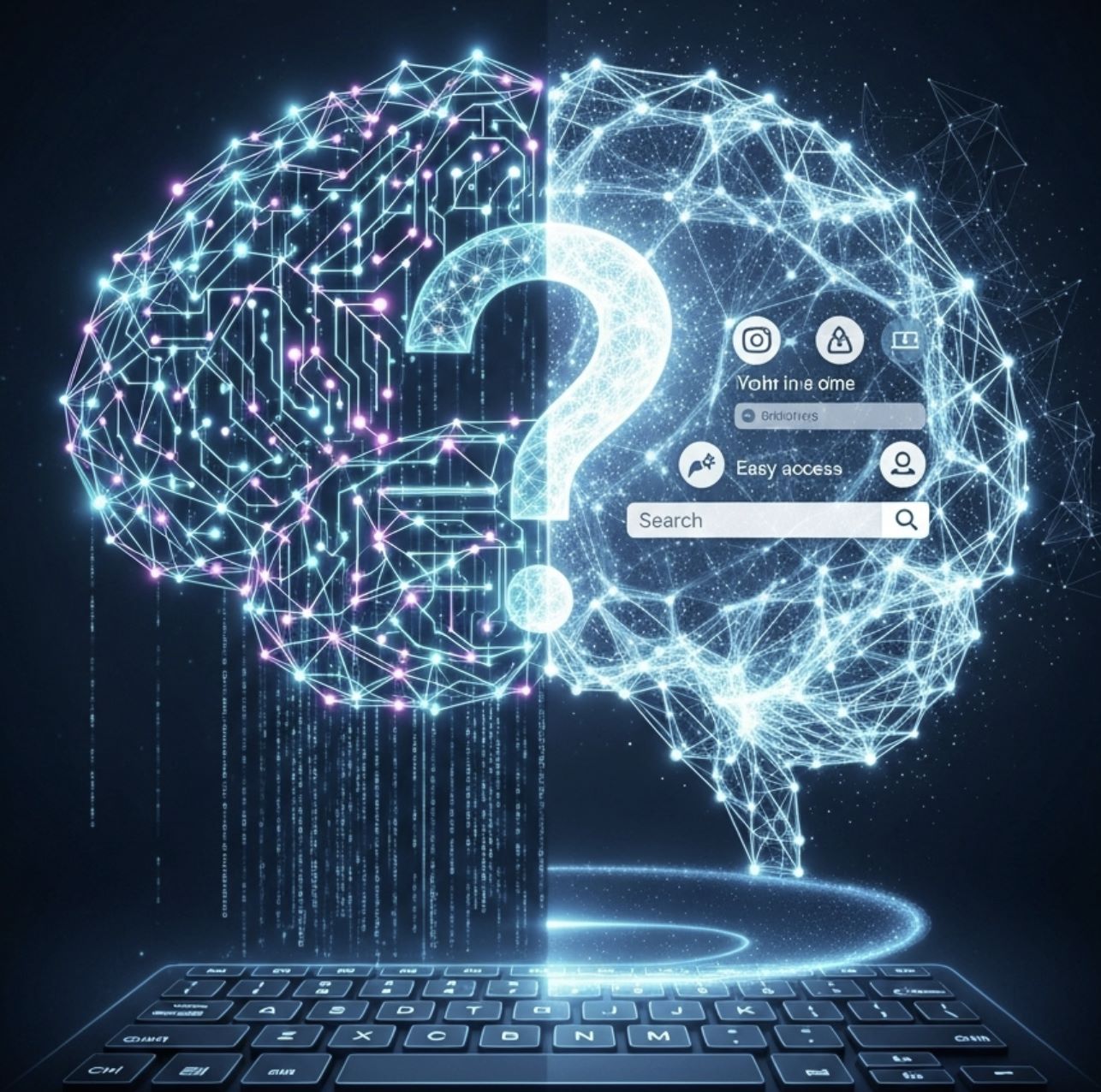
Comments 0
Leave a Comment
No comments yet. Be the first to comment!